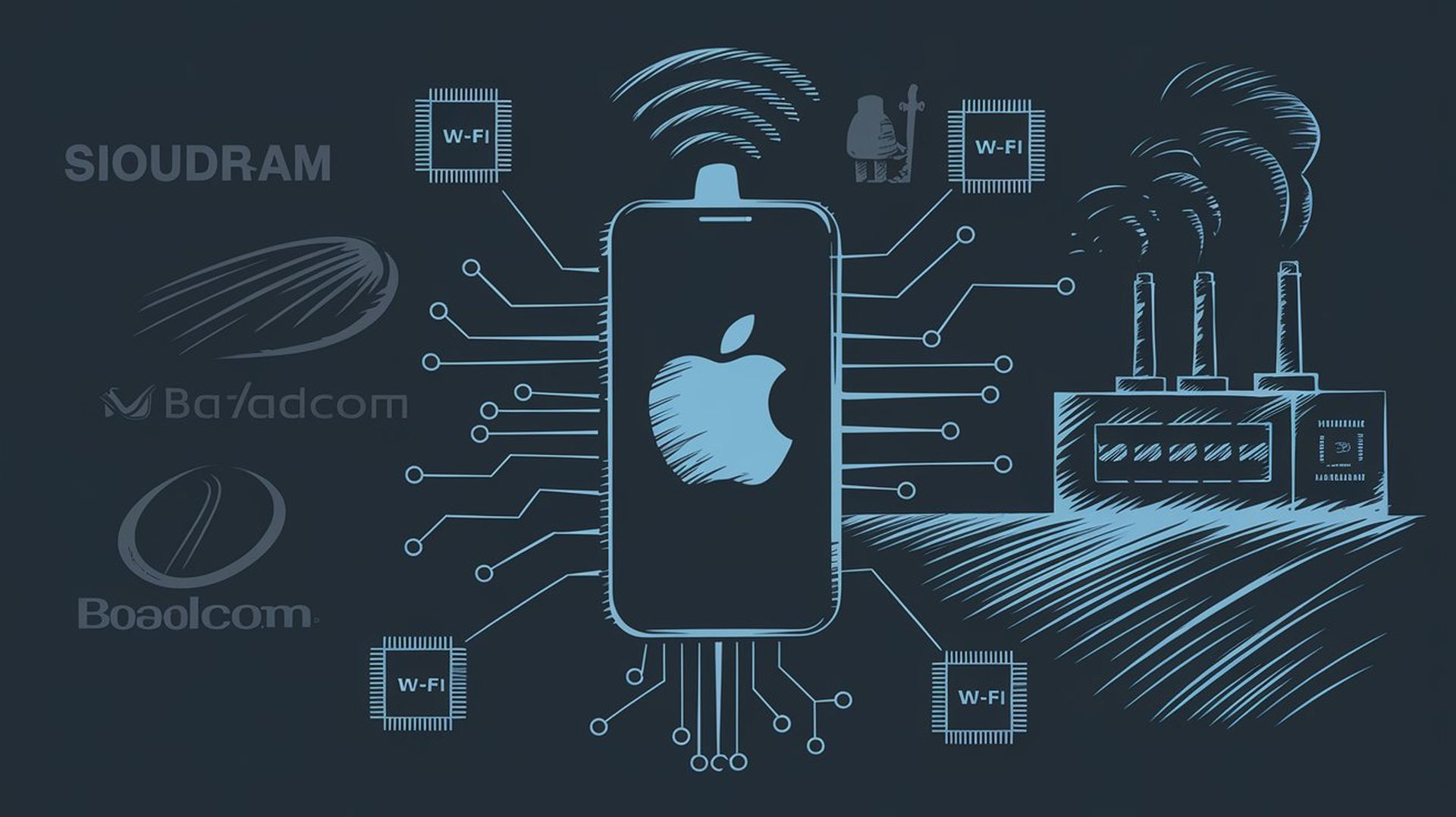Apple’s recent business decisions have left consumers uncertain about the company’s direction and capabilities in sectors like artificial intelligence, where progress has been slower than anticipated. Additionally, Apple may face challenges in creating its Wi-Fi chips and gaining control over its device’s technology. The transition to swap out Broadcom Wi-Fi chips with its technology is moving forward; the initial, in-house chips are anticipated to debut in the iPhone 17 around late 2025.
Apple currently buys more than 300 million Wi-Fi and Bluetooth chips each year from Broadcom; however, the company seems to be moving towards ending this collaboration. The iPhone 17 is set to be released in 2025. It is rumored to be the first model to include Apple’s designed Wi-Fi chips using TSMC’s N7 production method, which supports the cutting-edge Wi-Fi 7 technology standard. Apple plans to increase chip production across its range of products over the next three years to move towards more independence in manufacturing components.
Broadcom currently supplies over 300 million Wi-Fi+BT chips (hereafter referred to as Wi-Fi chips) per year to Apple. However, Apple will rapidly reduce its reliance on Broadcom. With new products in 2H25 (e.g., iPhone 17), Apple plans to use its own Wi-Fi chips, which will be…
— 郭明錤 (Ming-Chi Kuo) (@mingchikuo) October 31, 2024
Apple WiFi chips vs Broadcom: What we know about 2025 transition plans
Apple is working on producing its Wi-Fi chips, including Apple-designed 5g and Wi-Fi parts, for their devices. This move is part of a strategy to enhance connectivity and reduce battery usage for products like the iPhone SE 4 set to feature Apple’s inaugural 5g modem known as “Centauri.” This development is anticipated to be available in 2025. Yet when it comes to the iPhone SE 4’s initial stages, retaining Broadcom Wi-Fi chip will be the case; however, this is expected to change with the iPhone 17 as Apple plans to transition to a self-developed modem and Wi-Fi setup for that model.
For quite some time now, Apple has been working towards achieving independence in this area by taking over Intel’s modem division in 2019 to transition away from Qualcomm’s modems. However, despite investments made, Apple’s 5 G modem encountered setbacks and wasn’t able to meet the deadline for the iPhone 15. With the launches of the SE 4 and iPhone 17 still months away, there is no certainty that Apple’s progression with Wi-Fi chips will be without challenges. The journey towards self-reliance in producing chips could lead to cost savings and improved product integration. It also opens Apple to uncertainties and possible setbacks in meeting its commitments.

Apple’s success has been closely tied to its rein over its hardware ecosystem for a while; however, recent hurdles and delays beg the question of whether this strategy will keep yielding results across different sectors. For example, Apple’s brief foray into the industry is widely viewed as a venture that hasn’t yet resulted in tangible consumer products. Likewise, the company’s pace in embracing intelligence trails behind its rivals showcases a cautious approach that contrasts sharply with the rapid AI progress made by other tech behemoths.
Apple’s recent decision to postpone developing Wi-Fi chips in-house signals a change in the company’s ability to handle different technology releases smoothly. While customers have come to expect Apple’s track record of launching products, it might be wise for them to adjust their expectations as Apple explores new and complex technological domains. Nevertheless, Apple’s progress in developing Wi-Fi and 5 G chips could enhance its brand reputation by ensuring integration within its ecosystem and more control over product quality and pricing. The industry is closely monitoring Apple’s expanding goals to see if they will yield the success seen with the iPhone and iPad.
Image credit: Furkan Demirkaya/Ideogram





